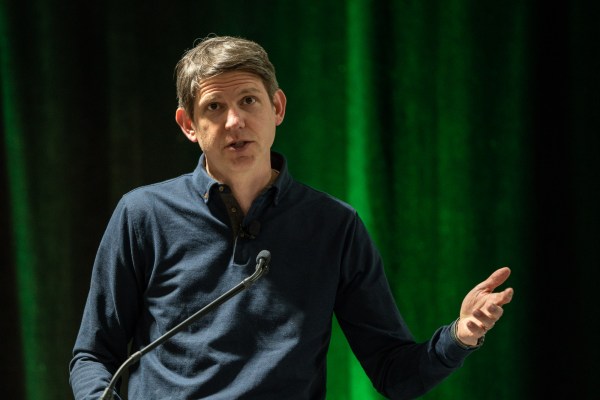It’s a perennial question for early-stage startups: How does one find product-market fit (PMF)? What do you do to ensure that your idea takes a form that meets some sort of demand in your target market? How do you get your idea to resonate in the world?
At TechCrunch’s Early Stage event a couple weeks ago in Boston, David Thacker, a general partner at Greylock, advised startups to keep it simple: focus, adjust and adapt.
The definition of PMF is, for the most part, subjective, but Thacker looks for something more tangible.
“It doesn’t mean you’ve launched a product and scaled it to millions of customers and users,” he said. “What I’m looking for is some semblance that what you’ve built is resonating with a set of customers.”
This metric may vary by stage, but Series A and onward is when it becomes critical for a company to have PMF. At that stage, Thacker said, investors want to see a moderate scale of consumer usage, and as a company looks toward a Series B round, it’s best to start thinking about total addressable market (TAM) size and where your product sits in relation to it.
“You may have found product-market fit with an audience segment, but how big is that audience? How lucrative is that going to be when expanded out? Those are the things we start to think about,” he said, urging founders to determine their company’s PMF with a metric that aligns with the company’s values.
“It’s not only going to help you build a better product, but for investors, it’s more impressive to see that sophistication,” he said. However, he added that metrics such as monthly active users is a terrible way to determine PMF: “It’s very easy to game. If someone uses your product for one second or a 30-day period, it doesn’t mean they’re an advocate or engaged user.”
There will be times when a business must adjust its PMF as new technology emerges or as it scales. When this moment arrives, it’s important to remain as focused as possible, Thacker believes. “The best products typically have a very narrow focus,” he said. “They deliver on those value propositions in a world-class way. It’s important to put all your energy, your sacred resources as a startup, into that focus.”
When it comes to expanding, he feels it’s best to wait to see consumer demand in a segment before simply jumping into something new. That way, a company doesn’t have to create its own demand and can capitalize on consumer traction. This can be a positive signal for investors, who will then be more inclined to help a founder double down on the increased demand, he said.
“Focus” was his answer to most questions at the panel: Focus on refining one’s product so it never strays from the brand; focus on building PMF while dealing with constrained or bootstrapped resources.
The best companies are always talking to their consumers, getting feedback to understand how their needs are evolving, but even so, it’s imperative to focus on what one believes is best for their brand, Thacker said.
Naturally, there will come a time when another company figures out a better PMF. That is the nature of technology, he said. “Technology is constantly changing. That is just another reason to focus — though you can never truly rest your laurels on technology, it does create opportunity,” he said. “And so you’ve got to stay on top of it.”
